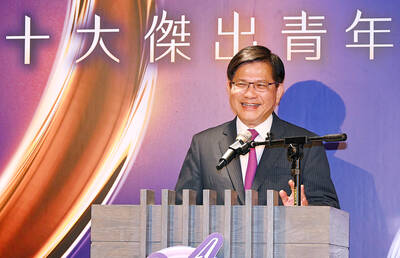Wish lists often accompany celebrations around the beginning of a new year. And why not?
There’s a lot to hope for — especially in the world of technology, which has always promised to help us do more with less.
Too often, though, technology ends up getting in our way rather than paving the path to our success. Here are some wishes for how technology could live up to its promise this year.
801.11N, AT LAST
The world badly needs the IEEE — the professional technical organization charged with ratifying wireless transmission standards — to finally ratify 802.11n, the next-generation wireless protocol that has been in the works for years now. Most of what we do on the computer is either tied to the Internet or headed in that direction, so fast connectivity to the Net has never been more important. 802.11n delivers speed — and lots of it. A good 802.11n-based network connection is as fast as a traditional wired Ethernet hookup.
Yet the 802.11n products on the market today retain the “draft” moniker, as the IEEE drags its feet in ratifying the standard. The delay hurts us all, for it slows the adoption of the faster gear, and the threat remains that the 802.11n “draft” equipment we buy today may not be fully interoperable with the ultimate standard. A fully ratified 802.11n specification in 2009 could help fuel continued innovation in Web-centric applications and bring a plethora of low- cost wireless products to the market.
BLU-RAY AFFORDABILITY
Finally, the hi-def DVD standards wars are over, with Sony’s Blu- Ray claiming victory over the competitor HD-DVD. So are millions of high-def fans celebrating by running out to the store and buying Blu- Ray players? Not exactly.
That’s because the prices of those Blu-Ray DVD players and burners remains prohibitively high. Not many are going to hand over US$300, US$400, or even US$500 for a Blu-Ray DVD player when upconverting models that sell for US$50 can make today’s DVDs look very close to Blu-Ray quality.
Sony has to lower its licensing prices, or else the company runs the risk of winning the standards battle but losing the war for the hearts and minds of technology consumers. In technology, achieving critical mass is as much about affordability as it is about a winning standard. Just ask Apple, which lost big to the world of IBM-compatible computers back in the 1980s by keeping its technology proprietary and its prices high. Let’s hope Sony sees the light in 2009, before other technologies come along and make the DVD itself irrelevant.
LOWER PRICES FOR SSDS
Today’s hard drives — built around rapidly spinning magnetic platters — have been the primary performance bottleneck in personal computers for years. Manufacturers have attempted to improve performance by spinning the platters even faster, but there are always downsides to pushing this technology — namely, more heat and more noise. And no matter what performance-improving gimmick disk makers come up with, they cannot overcome the Achilles heel of traditional drives: they’re fragile. In the millisecond it takes for a hard drive to “crash,” all of your data can be gone — for good.
Solid state drives — SSDs for short — solve the bottleneck issue in a big way. Built using nonvolatile memory chips — the kind that don’t lose what’s stored in them when the power is turned off — these drives are many times faster than traditional hard drives for certain operations. Instead of waiting three minutes or more for your operating system to boot up, how does 20 seconds sound? And then there are the fringe benefits: no more noise, much less worry over data loss, low heat, and much less power consumption.
The only downside currently is cost. You’ll spend US$200 or more for a 64-gigabyte SSD, whereas the same US$200 will buy you two 1-terabyte traditional hard drives. Still, for notebook users, SSDs make sense now. Here’s hoping that in 2009 prices for SSDs fall and capacities increase, making them worthwhile for desktop computer users as well.
WINDOWS 7 AHEAD OF SCHEDULE
Windows users have become cynical over the years, as Microsoft has continued to promise a lot with each new release of Windows but deliver far less. By almost any measure, Windows Vista has been a flop, disappointing those who feel that the operating system’s visual panache did not make up for its poor performance or compatibility woes.
But Windows users have a pleasant surprise coming in the form of Vista’s successor, Windows 7. Microsoft released an early beta version of the operating system to members of the technology press, and even in its current form, Windows 7 shows that Microsoft has learned from its mistakes with Vista and is focusing on what matters most to users: responsiveness, intuitiveness, and low resource usage.
Even at this stage, Windows 7 looks like a polished product, and from the outset, the improvements in speed are apparent. One recent test showed Windows 7 to be faster than either Vista or XP, by a significant margin in some cases. Other annoyances are also gone: the obtrusive user account control (UAC) dialog boxes are less prevalent, and small interface improvements have been added at almost every turn to make your computing experience less frustrating.
Windows 7 is going to be good for the tech industry and good for computer users. Let’s hope it makes its way to your desktop this year.
MORE INPUT OPTIONS
Perhaps the most amazing thing about the rise of personal technology is that it has largely relied on input devices — the keyboard and mouse — that are uncomfortable, awkward, or error-prone to a large number of people.
As humans, we can do so much more by using our hands to touch and move objects and our voices to provide instructions and feedback. But technology products just haven’t been smart enough to allow us to interact with them in those ways.
That’s starting to change, and this year we have every right to hope that we’ll have more natural input options available to us. Both Microsoft and Apple have clearly shown leadership in the touch arena. The iPhone’s touch-centric interface has already inspired dozens of imitators, and Microsoft’s Surface computing device is showing up in hundreds of public areas. Even Windows 7, Vista’s successor, will reportedly support touch screens as well as traditional displays. Here’s to hoping this year ushers in a host of new products that allow us to work more intuitively than the keyboard or the mouse does.
BROADBAND TO THE HINTERLANDS
Now more than ever, if you’re not connected to the Internet, you’re not connected to opportunity, advancement, or the rest of the world. Unfortunately, slow or no Internet connectivity remains a fact of life for many around the world, especially those in remote areas.
Because stringing broadband lines to lower-density areas is often difficult to justify from a business perspective, it will be left to government initiatives and public imperative to make widespread access to high-speed Internet a priority. It can be done, and the long-term payoff of the effort and expense will be unquestionable, as more people are brought into today’s globalized workforce and ultimately become significant contributors to local economies. Here’s to hoping that this year we move resolutely toward making the availability of high-speed Internet access something that’s closer to a right than a privilege.

In late October of 1873 the government of Japan decided against sending a military expedition to Korea to force that nation to open trade relations. Across the government supporters of the expedition resigned immediately. The spectacle of revolt by disaffected samurai began to loom over Japanese politics. In January of 1874 disaffected samurai attacked a senior minister in Tokyo. A month later, a group of pro-Korea expedition and anti-foreign elements from Saga prefecture in Kyushu revolted, driven in part by high food prices stemming from poor harvests. Their leader, according to Edward Drea’s classic Japan’s Imperial Army, was a samurai

The following three paragraphs are just some of what the local Chinese-language press is reporting on breathlessly and following every twist and turn with the eagerness of a soap opera fan. For many English-language readers, it probably comes across as incomprehensibly opaque, so bear with me briefly dear reader: To the surprise of many, former pop singer and Democratic Progressive Party (DPP) ex-lawmaker Yu Tien (余天) of the Taiwan Normal Country Promotion Association (TNCPA) at the last minute dropped out of the running for committee chair of the DPP’s New Taipei City chapter, paving the way for DPP legislator Su

Located down a sideroad in old Wanhua District (萬華區), Waley Art (水谷藝術) has an established reputation for curating some of the more provocative indie art exhibitions in Taipei. And this month is no exception. Beyond the innocuous facade of a shophouse, the full three stories of the gallery space (including the basement) have been taken over by photographs, installation videos and abstract images courtesy of two creatives who hail from the opposite ends of the earth, Taiwan’s Hsu Yi-ting (許懿婷) and Germany’s Benjamin Janzen. “In 2019, I had an art residency in Europe,” Hsu says. “I met Benjamin in the lobby

April 22 to April 28 The true identity of the mastermind behind the Demon Gang (魔鬼黨) was undoubtedly on the minds of countless schoolchildren in late 1958. In the days leading up to the big reveal, more than 10,000 guesses were sent to Ta Hwa Publishing Co (大華文化社) for a chance to win prizes. The smash success of the comic series Great Battle Against the Demon Gang (大戰魔鬼黨) came as a surprise to author Yeh Hung-chia (葉宏甲), who had long given up on his dream after being jailed for 10 months in 1947 over political cartoons. Protagonist